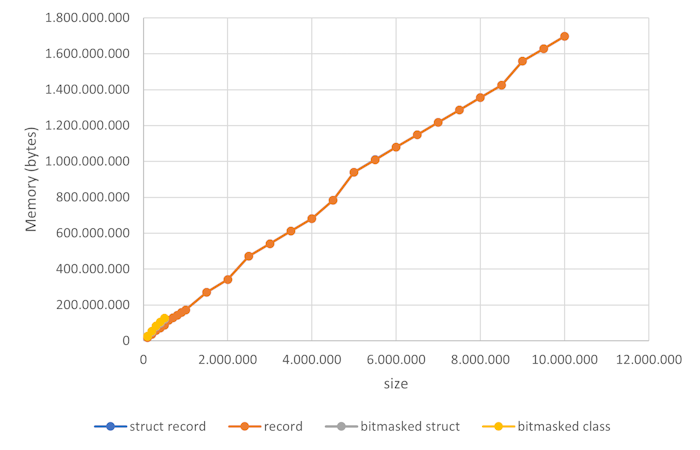What is Hedera Crypto Utilities? Exploring Open Source Funding, Architecture, and Community Impact
Abstract This post explores Hedera Crypto Utilities, a Java-based blockchain library designed for robust cryptographic operations on the Hedera network. We dive deep into its open source funding model, legal licensing under Apache 2.0, community-driven development, technical architecture, and real-world use cases. In addition to providing historical context and core features, the discussion also highlights challenges, limitations, and future trends influencing not only Hedera Crypto Utilities but also the broader landscape of open source blockchain projects. Throughout, we integrate insights from additional resources and comparisons to similar innovations in open source funding and blockchain technology. Introduction In today's rapidly evolving blockchain landscape, Hedera Crypto Utilities stands out as an essential resource for developers and enterprises alike. Designed in Java and distributed under the widely adopted Apache 2.0 license, this library offers secure and efficient cryptographic functionalities tailored for the Hedera network. Its success is powered by a strong community that fuels continuous improvement through transparent open source funding models. This post provides an in-depth exploration of the library’s evolution, its funding model, technical design, and the broader ecosystem that supports it. Whether you are a developer seeking robust cryptographic tools or an investor interested in innovative funding and governance models, this article will equip you with a comprehensive understanding of Hedera Crypto Utilities. Background and Context Hedera Crypto Utilities emerged as a significant component in the Hedera ecosystem. Its development kicked off with the goal of standardizing cryptographic operations, making it easier to integrate high-security blockchain features into decentralized applications. Here is an overview of its foundational elements: Historical Evolution: From its initial release to its continuous improvement on the Hedera Services GitHub repository, the project has consistently embraced modern software engineering practices. Its evolution mirrors the rapid growth of the blockchain industry itself. Legal Licensing with Apache 2.0: The choice of the Apache 2.0 license invites global collaboration by allowing developers to modify, distribute, and integrate the software across diverse projects. This permissive license not only fosters innovation but also ensures legal clarity and flexibility for both commercial and non-commercial applications. For detailed license information, visit the Apache 2.0 License documentation. Ecosystem Interconnectivity: Hedera’s network is designed to support enterprise-grade applications, and integrating cryptographic utilities is crucial. Its interoperability with other blockchain platforms such as Ethereum and Bitcoin is made possible by the open standards and protocols it employs. This seamless integration emphasizes the project's commitment to creating a sustainable and decentralized ecosystem. Core Concepts and Features Hedera Crypto Utilities offers a wide range of features that make it an indispensable tool for the Hedera community. These key concepts include: 1. Open Source Funding Model Decentralized Financial Support: Funding is generated through a mix of community crowdfunding, sponsorship programs (e.g., GitHub Sponsors), and decentralized finance (DeFi) investments. This diversified model minimizes dependency on single investors and emphasizes financial transparency. Community-Driven Contributions: Contributions are not limited to code. Community members support bug fixes, feature enhancements, and secure cryptographic implementations. The transparent funding model ensures that every stakeholder’s voice is heard and that development remains aligned with community needs. 2. Technical Architecture and Design Modular Java Library: Developed in Java, one of the industry’s most reliable programming languages, the library is designed with modularity and extensibility in mind. This ensures that various cryptographic functions can be employed as standalone modules or integrated into larger applications. Security Features: The library adheres to industry standards for cryptography, featuring code audits, continuous integration, rigorous peer reviews, and automated testing. These measures help maintain security and data integrity on the Hedera network. Interoperability: Beyond serving as a robust tool for Hedera, its design ensures integration with other blockchain platforms. This interoperability provides a bridge between traditional systems and emerging technologies, supporting a multi-chain strategy that appeals to various stakeholders. 3. Community and Ecosystem Engagement Collaborative Development: Regular updates, code reviews, and community discussions are vital to the success of Hedera Crypto Utilities. This collaborative approach reinforces qualit

Abstract
This post explores Hedera Crypto Utilities, a Java-based blockchain library designed for robust cryptographic operations on the Hedera network. We dive deep into its open source funding model, legal licensing under Apache 2.0, community-driven development, technical architecture, and real-world use cases. In addition to providing historical context and core features, the discussion also highlights challenges, limitations, and future trends influencing not only Hedera Crypto Utilities but also the broader landscape of open source blockchain projects. Throughout, we integrate insights from additional resources and comparisons to similar innovations in open source funding and blockchain technology.
Introduction
In today's rapidly evolving blockchain landscape, Hedera Crypto Utilities stands out as an essential resource for developers and enterprises alike. Designed in Java and distributed under the widely adopted Apache 2.0 license, this library offers secure and efficient cryptographic functionalities tailored for the Hedera network. Its success is powered by a strong community that fuels continuous improvement through transparent open source funding models. This post provides an in-depth exploration of the library’s evolution, its funding model, technical design, and the broader ecosystem that supports it. Whether you are a developer seeking robust cryptographic tools or an investor interested in innovative funding and governance models, this article will equip you with a comprehensive understanding of Hedera Crypto Utilities.
Background and Context
Hedera Crypto Utilities emerged as a significant component in the Hedera ecosystem. Its development kicked off with the goal of standardizing cryptographic operations, making it easier to integrate high-security blockchain features into decentralized applications. Here is an overview of its foundational elements:
Historical Evolution:
From its initial release to its continuous improvement on the Hedera Services GitHub repository, the project has consistently embraced modern software engineering practices. Its evolution mirrors the rapid growth of the blockchain industry itself.Legal Licensing with Apache 2.0:
The choice of the Apache 2.0 license invites global collaboration by allowing developers to modify, distribute, and integrate the software across diverse projects. This permissive license not only fosters innovation but also ensures legal clarity and flexibility for both commercial and non-commercial applications. For detailed license information, visit the Apache 2.0 License documentation.Ecosystem Interconnectivity:
Hedera’s network is designed to support enterprise-grade applications, and integrating cryptographic utilities is crucial. Its interoperability with other blockchain platforms such as Ethereum and Bitcoin is made possible by the open standards and protocols it employs. This seamless integration emphasizes the project's commitment to creating a sustainable and decentralized ecosystem.
Core Concepts and Features
Hedera Crypto Utilities offers a wide range of features that make it an indispensable tool for the Hedera community. These key concepts include:
1. Open Source Funding Model
Decentralized Financial Support:
Funding is generated through a mix of community crowdfunding, sponsorship programs (e.g., GitHub Sponsors), and decentralized finance (DeFi) investments. This diversified model minimizes dependency on single investors and emphasizes financial transparency.Community-Driven Contributions:
Contributions are not limited to code. Community members support bug fixes, feature enhancements, and secure cryptographic implementations. The transparent funding model ensures that every stakeholder’s voice is heard and that development remains aligned with community needs.
2. Technical Architecture and Design
Modular Java Library:
Developed in Java, one of the industry’s most reliable programming languages, the library is designed with modularity and extensibility in mind. This ensures that various cryptographic functions can be employed as standalone modules or integrated into larger applications.Security Features:
The library adheres to industry standards for cryptography, featuring code audits, continuous integration, rigorous peer reviews, and automated testing. These measures help maintain security and data integrity on the Hedera network.Interoperability:
Beyond serving as a robust tool for Hedera, its design ensures integration with other blockchain platforms. This interoperability provides a bridge between traditional systems and emerging technologies, supporting a multi-chain strategy that appeals to various stakeholders.
3. Community and Ecosystem Engagement
Collaborative Development:
Regular updates, code reviews, and community discussions are vital to the success of Hedera Crypto Utilities. This collaborative approach reinforces quality and encourages the development of innovative cryptographic methods.Transparency and Accountability:
Through open source channels, community contributions are tracked publicly. This level of transparency increases trust among users and investors, and fosters accountability.Legal and Funding Synergy:
By mixing robust open source funding with clear licensing models, the project stands as a benchmark for how innovation can be sustainably funded, making it a reference point for other blockchain initiatives.
Applications and Use Cases
The practical applications of Hedera Crypto Utilities are extensive. Its core cryptographic functions serve numerous industries and application types across the Hedera network:
Real-World Examples
Enterprise Payment Gateways:
Companies use the library to secure transactions and validate digital signatures in payment systems. The cryptographic operations ensure that digital payments are secure, preventing fraud and ensuring data integrity.Digital Identity Verification:
The library is employed in identity management systems to confirm the authenticity of users. This application is critical in sectors like healthcare, finance, and government services where secure identity verification is paramount.Decentralized Applications (DApps):
Developers integrate Hedera Crypto Utilities into DApps that require high security, such as supply chain management and digital contracts. The library’s ease of integration and compliance with open source licensing ensures that complex applications remain both efficient and secure.
Table: Key Applications of Hedera Crypto Utilities
| Application Area | Use Case Description | Key Benefit |
|---|---|---|
| Enterprise Payment Systems | Secure transaction processing and digital signatures | High security and performance |
| Digital Identity | Verification of user identities across decentralized platforms | Trust and data integrity |
| Decentralized Applications | Integration into multi-functional apps for supply chain and governance | Flexibility and interoperability |
Challenges and Limitations
Despite its strengths, there are several challenges that Hedera Crypto Utilities—and many blockchain libraries—face:
Technical Challenges
Scalability:
As the user base grows, ensuring that the cryptographic functions remain efficient under heavy loads is critical. Developers continuously work to optimize performance as network demands evolve.Interoperability Issues:
While designed for integration, differences in protocol implementations across blockchains can sometimes lead to unexpected challenges, requiring additional bridging and interface layers.
Adoption Limitations
Resource Intensive:
Continuous funding through open source models requires sustained community engagement, which may fluctuate over time. Balancing new feature demands with maintenance of legacy code remains a constant challenge.Regulatory Environment:
Open source projects often face uncertainties around regulatory compliance, especially when it comes to financial transactions and data security in various jurisdictions. The decentralized funding model can attract scrutiny if it is not transparent or if the legal frameworks evolve.
Strategies to Overcome Challenges
- Regular Code Audits: Implementing frequent security audits and performance benchmarks can help identify bottlenecks before they become critical.
- Community Workshops and Hackathons: Encouraging widespread participation through events not only drives innovation but also educates contributors on best practices in both coding and open source governance.
Future Outlook and Innovations
Looking ahead, the future of Hedera Crypto Utilities and similar blockchain libraries is promising. Emerging trends and ongoing research indicate several exciting prospects:
Expansion of Open Source Funding
Innovative Financial Models:
With the evolution of decentralized funding, more community-driven approaches such as quadratic funding and tokenized sponsorship models are likely to emerge. These models can increase efficiency and democratize financial control further.Integration with DeFi:
Merging traditional open source funding with decentralized finance initiatives can lead to more resilient funding strategies that are less dependent on traditional financial channels.
Advancements in Cryptography and Security
Quantum-Resistant Algorithms:
As quantum computing becomes a reality, there will be a growing need for cryptographic libraries to adopt quantum-resistant algorithms. Hedera Crypto Utilities is well-positioned to be at the forefront of such innovations.Enhanced Interoperability:
As multiple blockchain platforms continue to develop, there will be a greater emphasis on cross-chain communication protocols. The library’s modular nature positions it as a key tool for ensuring seamless integration between networks.
Expanded Ecosystem Collaborations
Industry Partnerships:
Collaborations with major blockchain entities and enterprises—such as Hedera's official website and related projects—can provide additional resources, strategic guidance, and marketing support.Community Innovation:
Open projects, as documented in various articles like this comprehensive overview, set the stage for others to innovate upon established frameworks. Such collaborations increase the overall vibrancy and adaptability of the ecosystem.
Insights from Fellow Developers
The open source community continues to thrive on shared knowledge. For example, this Dev.to post delves into the nuances of funding platforms, and this insightful discussion explores the impact of collaborative open source investments on project sustainability—both of which are relevant to the evolving funding landscape of Hedera Crypto Utilities.
Summary
In summary, Hedera Crypto Utilities exemplifies the power of modern blockchain development by combining robust cryptography, comprehensive open source funding, and active community engagement. Its design, anchored by Java, supports modularity, interoperability, and high security—key ingredients for any enterprise-grade blockchain project. While challenges such as scalability and regulatory compliance exist, the community-driven approach and innovative funding strategies ensure that the project remains resilient and forward-thinking.
Here is a quick recap of the main points:
- Abstract and Introduction: We discussed the significance of Hedera Crypto Utilities in today’s blockchain ecosystem, focusing on its core functionalities and community-driven funding.
- Background and Context: Covered the historical evolution, open source licensing with Apache 2.0, and the ecosystem that supports the project.
- Core Concepts and Features: Outlined decentralized funding models; a modular, secure technical architecture; and the importance of community collaboration.
- Applications and Use Cases: Provided practical examples ranging from enterprise payment systems to digital identity management and decentralized applications.
- Challenges and Limitations: Analyzed technical and adoption hurdles, including scalability, interoperability, and regulatory uncertainties.
- Future Outlook and Innovations: Predicted a future with enhanced funding models, quantum-resistant cryptography, and broader ecosystem partnerships.
By embracing open source funding and a transparent governance model, Hedera Crypto Utilities not only serves as a critical blockchain library but also sets clear benchmarks for sustainability and innovation within the decentralized digital economy.
Additional Resources
For readers interested in further exploring the topics discussed in this post, please consider the following resources:
- More on the technical aspects and code contributions can be found on the Hedera Services GitHub repository.
- Visit the Hedera official website for detailed insights into the Hedera network and future updates.
- Learn about the licensing specifics by reviewing the Apache 2.0 License documentation.
- For broader views on crowdfunding and open source funding, check out this Dev.to article on GitHub Sponsors vs. Patreon.
By staying informed and involved, developers, investors, and community members can all contribute to shaping a sustainable future for blockchain and open source innovation.
Embrace the evolution of decentralized technology with Hedera Crypto Utilities—where robust cryptographic standards, innovative open source funding, and a passionate community converge to drive forward the future of secure digital ecosystems.













































































